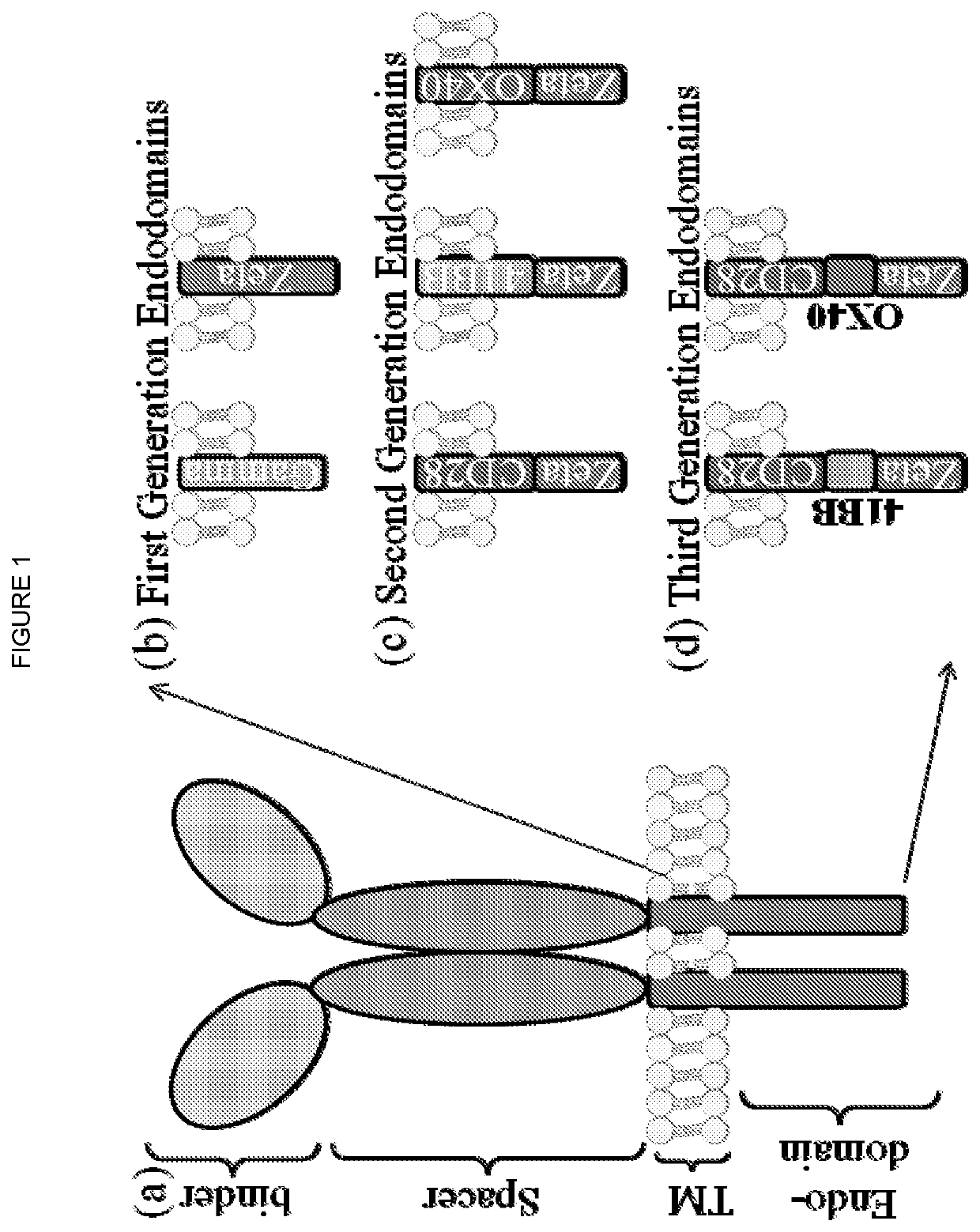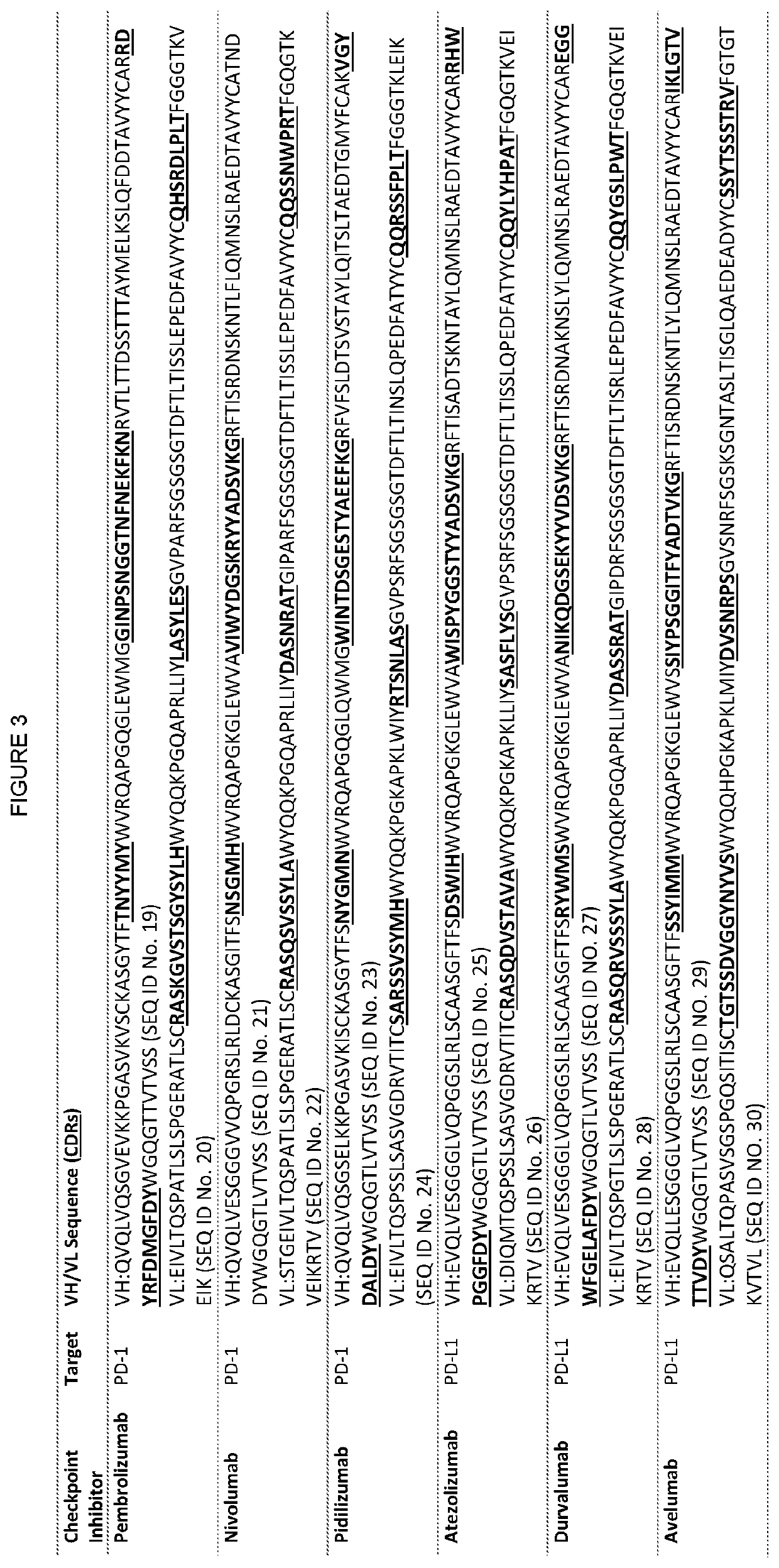Method for preconditioning a subject who is about to receive a t-cell therapy
a t-cell therapy and subject technology, applied in the field of preconditioning a subject who is about to receive a t-cell therapy, can solve the problems of limiting the full potential of adoptive t-cell therapy, limiting the duration and strength of the adaptive immune response, and avoiding tumour cell evasion and progression
- Summary
- Abstract
- Description
- Claims
- Application Information
AI Technical Summary
Benefits of technology
Problems solved by technology
Method used
Image
Examples
example 1
ting the Expression of PD-L1 by T Cells Expressing a CD19 / CD22 OR Gate
[0153]T cells were either left untransduced or transduced with a vector co-expressing a CD19 CAR having an antigen-binding domain comprising the VH sequence shown as SEQ ID No. 7 and the VL sequence shown as SEQ ID No. 8; and a CD22 CAR having an antigen-binding domain comprising the VH sequence shown as SEQ ID No. 16 and the VL sequence shown as SEQ ID No. 17.
[0154]The cells were then activated by stimulation with aCD3 aCD28 beads in the presence of IL2 for 48 hours, following which the expression of PD-1 and PD-L1 by the T-cells was investigated by flow cytometry. The results are shown in FIG. 2. The expression of PD-1 was upregulated on both non-transduced and CAR-expressing T cells following activation. Upregulation of PD-L1 expression was observed for CAR-expressing cells even in the absence of stimulation. For stimulated T cells, PD-L1 upregulation was greater for CAR-expressing cells than untransduced cells...
example 2
/ 2 Study of CAR-T Cells Expressing a CD19 / CD22 OR Gate in Patients with Relapsed / Refractory Diffuse Large B Cell Lymphoma (r / r DLBCL) with Two Different Pembrolizumab Regimens
[0155]CAR-T cells expressing the CD19 / CD22 OR gate described in Example 1 were used in a Phase 1 / 2 study in patients with relapsed / refractory Diffuse Large B Cell Lymphoma (r / r DLBCL). A dose escalation protocol was followed, as illustrated in FIG. 4, with two different pembrolizumab regimens.
[0156]The first three patients, receiving a 50×106 dose of CAR-T cells, did not receive pembrolizumab. The second group of patients received CAR-T cells at one of the following doses: 50×106, 150×106, 450×106 or 900×106 cells, followed by 3×200 mg doses of pembrolizumab: one on day 14, day 35 and day 56. The third group of patients received a single dose of 200 mg pembrolizumab the day before CAR-T cells. They then received CAR-T cells at one of the following doses: 450×106 or 900×106 cells.
[0157]Preliminary results from t...
PUM
| Property | Measurement | Unit |
|---|---|---|
| T-cell composition | aaaaa | aaaaa |
| strength | aaaaa | aaaaa |
| autoimmune reactivity | aaaaa | aaaaa |
Abstract
Description
Claims
Application Information
 Login to View More
Login to View More - R&D
- Intellectual Property
- Life Sciences
- Materials
- Tech Scout
- Unparalleled Data Quality
- Higher Quality Content
- 60% Fewer Hallucinations
Browse by: Latest US Patents, China's latest patents, Technical Efficacy Thesaurus, Application Domain, Technology Topic, Popular Technical Reports.
© 2025 PatSnap. All rights reserved.Legal|Privacy policy|Modern Slavery Act Transparency Statement|Sitemap|About US| Contact US: help@patsnap.com



